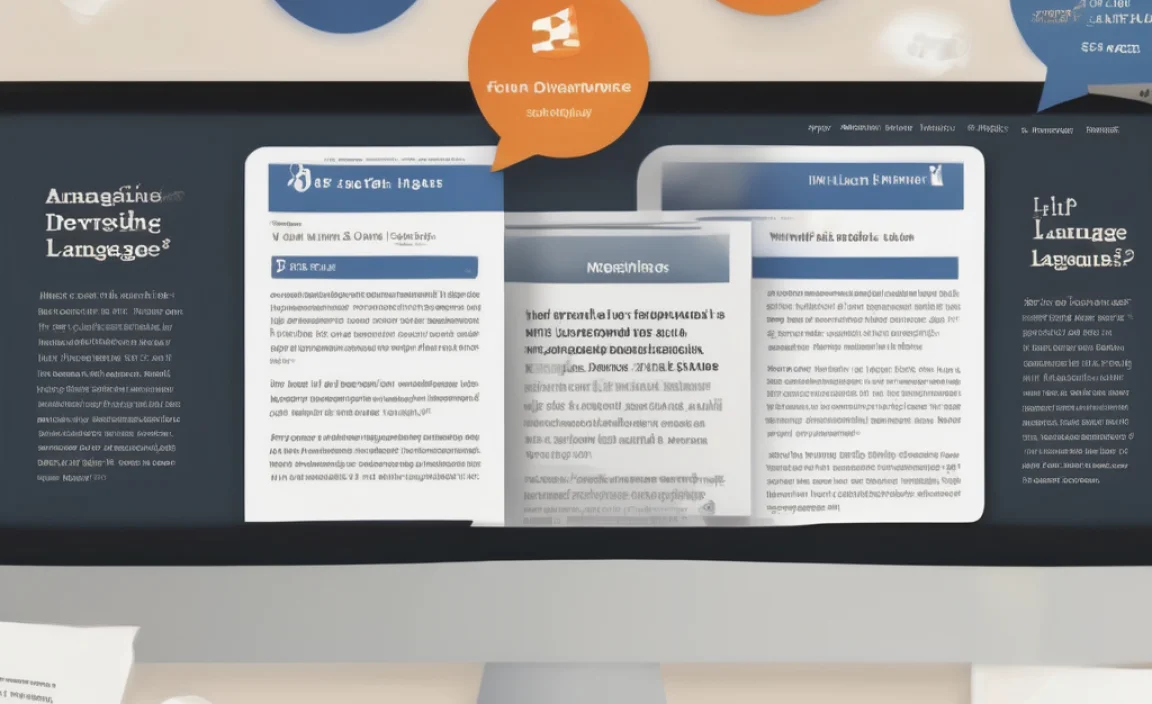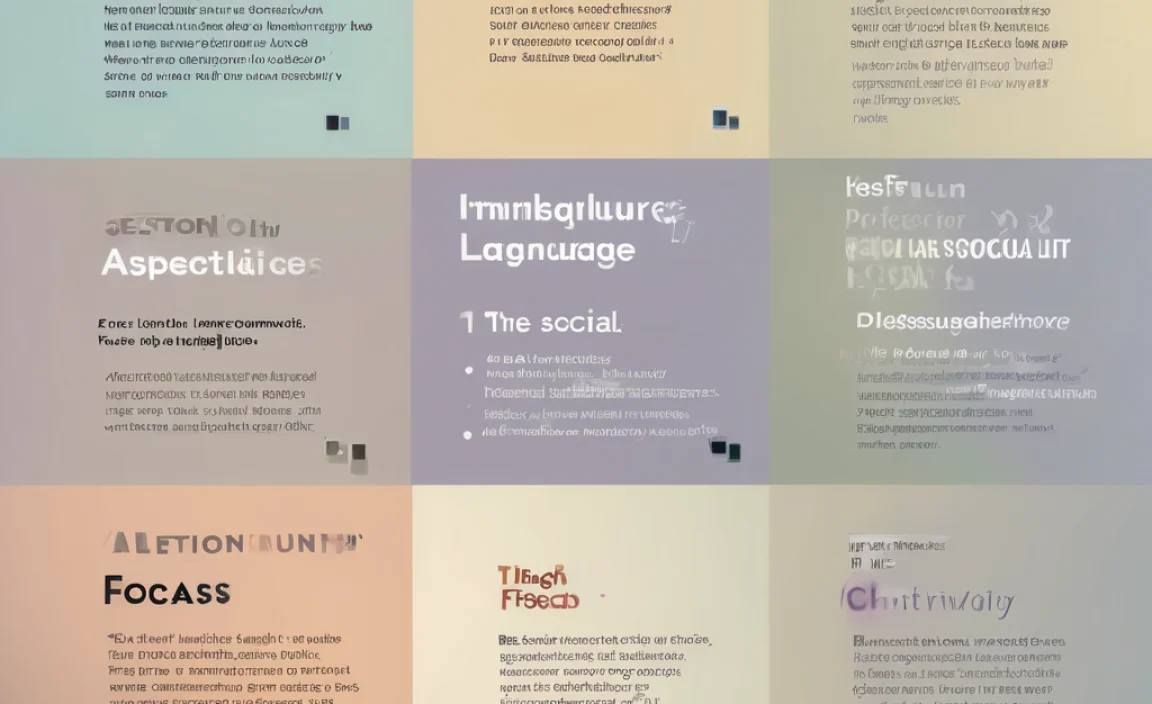Did you know there are more than 7,000 languages in the world? That’s a lot! Each language has its own unique features and amazing stories. Learning about these languages can be super fun and exciting. Do you want to discover some amazing facts about languages? Let’s dive in and explore the wonders of the words we use every day!
Key Takeaways
- There are over 7,000 languages worldwide today.
- Some languages have no alphabets at all.
- Language evolves and changes over time.
- Over 2,000 languages have fewer than 1,000 speakers.
- Discover amazing facts about languages worldwide every day.
Amazing Facts About Languages: An Overview

Languages are like living things. They grow, change, and sometimes even disappear. With more than 7,000 languages, each one tells a unique story. Some languages have been around for thousands of years. Others are brand new. Did you know that some languages don’t even have a written form? These languages are passed down by speaking and listening. Understanding these differences makes languages fascinating topics to explore.
- Languages can be spoken or written.
- Some languages are only whistled.
- Sign languages are used by millions of people.
- Languages can die out if not passed on.
- New languages can be created today.
Throughout history, humans have used languages to communicate. From ancient hieroglyphs to modern texting, languages evolve constantly. This evolution keeps them fresh and exciting. Exploring these changes gives us insight into human culture and history.
Fun Fact or Stats: Only 23 languages cover more than half of the world’s population.
What Makes a Language Unique?
Every language is special. Some have sounds that don’t exist in others. For example, the “click” sounds in some African languages are rare. These clicks are part of everyday speech. Imagine if English had clicks in its words! Also, some languages use different writing systems. Chinese uses symbols instead of letters. This difference makes learning languages a fun challenge. Each language has its own way of seeing the world.
Why Do Languages Change?
Languages change for many reasons. People move to new places and mix with others. New words are created all the time. Have you ever heard of “selfie” before smartphones? Probably not! Technology, travel, and culture all influence language change. Each new word tells a story of its time. Observing these changes helps us understand how we adapt and grow.
How Do Children Learn Languages?
Kids pick up languages quickly. They listen to people around them. They mimic sounds and try words. Have you ever seen a baby babbling? That’s the start of language learning! Children are like language sponges. They soak up new words and phrases naturally. This helps them become fluent speakers as they grow. Learning language is an exciting journey for every child.
Language Diversity Across the World

There are thousands of languages spoken across the globe. Every continent has its own set of languages, rich in history and culture. For instance, Asia is home to hundreds of languages, each with unique stories. In Africa, languages vary from region to region. Some tribes have languages that only they understand. This diversity makes the world a colorful place to explore.
- Asia has hundreds of different languages.
- Africa’s regions have distinct languages.
- Europe is known for its language variety.
- South America has many indigenous languages.
- Some languages are isolated to small islands.
Understanding language diversity helps us appreciate different cultures. It shows how people have evolved over time. Each language reflects its environment and history. Exploring new languages can open doors to new worlds of knowledge.
Fun Fact or Stats: Papua New Guinea has the most languages, with over 800 spoken.
Which Countries Have the Most Languages?
Did you know that India and Indonesia are home to many languages? These countries have hundreds of languages spoken within their borders. India alone has 22 official languages. Can you imagine a country with so many official languages? Diversity is part of everyday life there. This variety makes visiting these places an exciting cultural adventure.
How Do People Keep Languages Alive?
Some languages are at risk of disappearing. People work hard to keep them alive. They teach them in schools and pass them to younger generations. Have you seen a language class in action? Students learn by speaking, listening, and practicing every day. Keeping languages alive is important for preserving culture and history. It’s like saving a piece of the puzzle that makes up our world.
What Happens When a Language Disappears?
When a language fades away, a piece of culture is lost. Stories, songs, and traditions may disappear with it. Imagine if nobody could understand songs in their original language. It’s like losing a treasure chest full of memories. That’s why preserving languages is crucial. It ensures that future generations can enjoy and understand their heritage.
The Science Behind Language Learning

Have you ever wondered how people learn languages? Scientists study the brain to understand this process. They find that learning involves many parts of the brain. Listening, speaking, and understanding are all connected. This makes language learning an exciting area of study. It’s like solving a fun puzzle.
- The brain has areas for language processing.
- Learning languages engages multiple brain sections.
- Practice improves language skills.
- Both sides of the brain work together.
- Learning young helps with new languages.
Language learning is not just for young people. Adults can learn new languages too. They use different techniques and practice regularly. This keeps their brains active and healthy. Exploring new languages helps expand mental abilities.
Fun Fact or Stats: Bilingual brains can process information faster than monolingual ones.
Why Is Language Learning Important?
Learning languages opens many doors. It helps you connect with more people. Have you ever met someone and wished you spoke their language? Knowing multiple languages allows for deeper connections. It helps when traveling, working, and making friends. Language learning is like adding new tools to your personal toolbox.
How Does the Brain Handle Multiple Languages?
The brain is amazing at juggling languages. When you know more than one language, your brain switches between them easily. Have you ever switched languages in a conversation? It’s like flipping a switch. This ability keeps your brain sharp and engaged. Learning and using multiple languages helps your brain adapt and grow.
What Are Some Easy Languages to Learn?
Some languages are easier to learn than others. Languages with similar alphabets or sounds to your own are often easier. For English speakers, languages like Spanish or French might be simpler to pick up. Have you ever tried speaking a new language? It’s a great way to challenge yourself and expand your communication skills.
Conclusion
The world of languages is full of wonders and amazing facts about languages. Exploring this diversity enriches our understanding of cultures and people. From unique writing systems to the science of learning, languages tell stories of our world. They connect us in ways words alone can’t describe. Keep discovering and enjoy the journey!
FAQs
Question: Why are some languages at risk of disappearing?
Answer: Some languages have few speakers left. When communities stop using them, they may fade away. Efforts to preserve languages help keep these amazing facts about languages alive.
Question: How many languages are there in the world?
Answer: There are over 7,000 languages in the world. Each one has its own unique features. These languages make our world rich with amazing facts about languages.
Question: What makes a language difficult to learn?
Answer: Languages can be hard to learn if they have different sounds, grammar, or writing systems. For example, Chinese uses symbols instead of letters, which can be tricky.
Question: How do children learn languages so quickly?
Answer: Children learn by listening and mimicking. Their brains are wired to pick up languages fast. It’s like being a sponge for words!
Question: What is the oldest language in the world?
Answer: Languages like Sanskrit, Tamil, and Greek are among the oldest still in use. These ancient languages offer amazing facts about languages from history.
Question: Can adults learn new languages effectively?
Answer: Yes, adults can learn new languages! With practice and dedication, adults can pick up new languages and enjoy amazing facts about languages as they learn.











